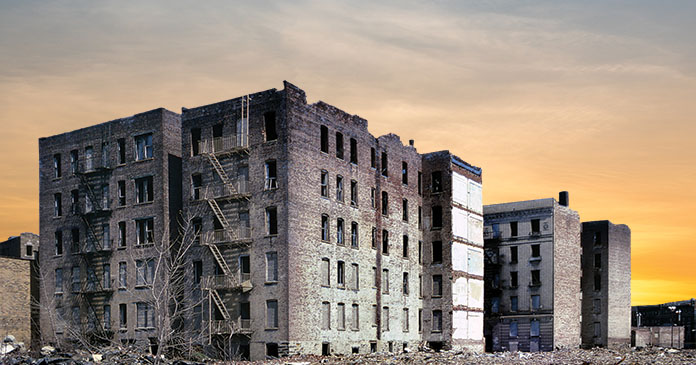One of the biggest frustrations about getting old is hearing younger people propose ideas that were debunked decades ago—and then getting “eyes glazed over” looks from them after explaining that we’ve already been there and done that. Proposers of such ideas rarely change their minds after I say, “Dude, I was there and remember—and it was a disaster.”
The latest “old is new again” proposal is for the government to just build housing—as in public officials buying the land, choosing the design, finding a developer, and then serving as landlord. The impetus is the nation’s affordable-housing crisis. Advocates have changed the terminology. They are proposing that “we” build “social housing” rather than “public housing projects,” but it’s the same blighted idea.
“Public housing is ready to make a comeback,” wrote Daniel Denvir and Yonah Freemark in left-leaning Slate. They say current efforts to up-zone property (allowing developers to build higher-density projects with fewer regulations) yield only modest results. They rehash the debate on the Left—between YIMBYs (Yes In My Back Yarders) and those who claim that new building promotes gentrification.
“But this debate is often impoverished,” they add. “As policymakers continue to confront this crisis, it is time for them to reconsider an obvious but long-taboo solution: building new public housing.” Of course, this time the government will do it better than the last time by—get this—avoiding income restrictions and opening the units to all comers.
State and local governments can simply build “millions of homes themselves” and create “vibrant, mixed-income neighborhoods,” they argue. The writers admit that past projects fell into disrepair and the feds demolished most of them in the 1970s. This time, however, we’ll provide enough resources to housing authorities to maintain them properly. It’s all so easy.
Growing up in the Philadelphia area in the 1970s, I recall the massive protests and disputes that ensued after the city built housing towers in the midst of a settled urban neighborhood of row houses. The project led to deep racial divisions and sparked an exodus to the suburbs. Such stories repeated themselves in big cities across the country.
Pruitt-Igoe in St. Louis was perhaps the most notorious public housing project in America, with its 33 towers that resembled those hideous Brutalist developments that defined the Soviet Union. They became a sea of crime, social dysfunction and blight. Many people cheered when the federal government demolished the buildings only 18 years after the grand opening.
Obviously, modern planners won’t take the exact same approach, but the government has, shall we say, a spotty record in maintaining its infrastructure. During that era, the feds were the nation’s largest slumlord. Urban theorist Jane Jacobs complained in her book, The Death and Life of Great American Cities, that government planners imposed their utopian vision on communities—and didn’t much consider the views of likely residents or neighbors.
Because of the obvious failures of cramming thousands of people into dystopian housing blocks, the feds moved onto a new-and-improved public housing solution in the 1990s. The Clinton administration embraced “scattered-site housing,” by which localities built (with federal funds) smaller public-housing projects—often single-family homes or duplexes—in the midst of settled neighborhoods.
I watched the process closely in my small Ohio city—and they created the same problems but on a smaller scale. The new government houses cost much more to build than surrounding market-rate houses, but these homes gained a stigma. Ultimately, the government disrupted neighborhoods and garnered resentment. Whatever the reasons, it did not create “vibrant, mixed-income’ communities.
These are different times, so they will yield different approaches, but a few points seem obvious. First, the government doesn’t do anything well. Whatever design motif or strategy it chooses, it will impose them in a heavy-handed manner. The same governments that let dam spillways collapse and freeways become pockmarked with potholes, will fail to maintain these new “social housing” projects—and it has little to do with inadequate funding.
Second, there isn’t enough money—even in a world with a $ 31.8 trillion federal debt—to just build housing for everyone. The government currently subsidizes private developers to build affordable housing. Thanks to regulations, union work requirements, and bureaucracy, that has led to low-income projects costing as much as $1 million a unit. Those same inefficiencies will plague public housing.
The writers complain that developers aren’t building enough housing even with the current effort to reduce housing regulations.
Well, California has been restricting housing supply for decades, so it’s unrealistic to expect builders to solve the problem after only a few years of loosened restrictions. The new approach is yielding results, but we need to make it easier to build housing across the board.
I’m old enough to have watched the government create the housing shortage. Only people who ignore relatively recent history would suggest more government is the solution.
Author Steven Greenhut is western region director for the R Street Institute.
















